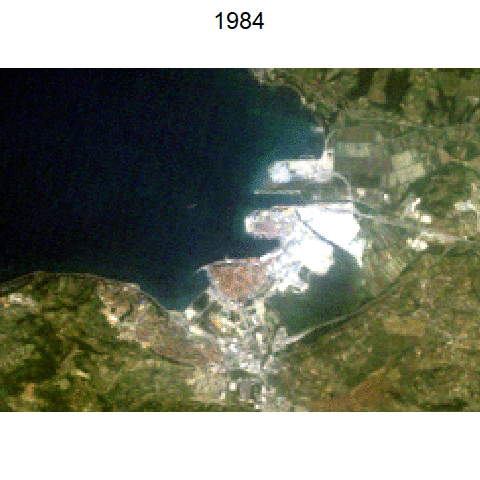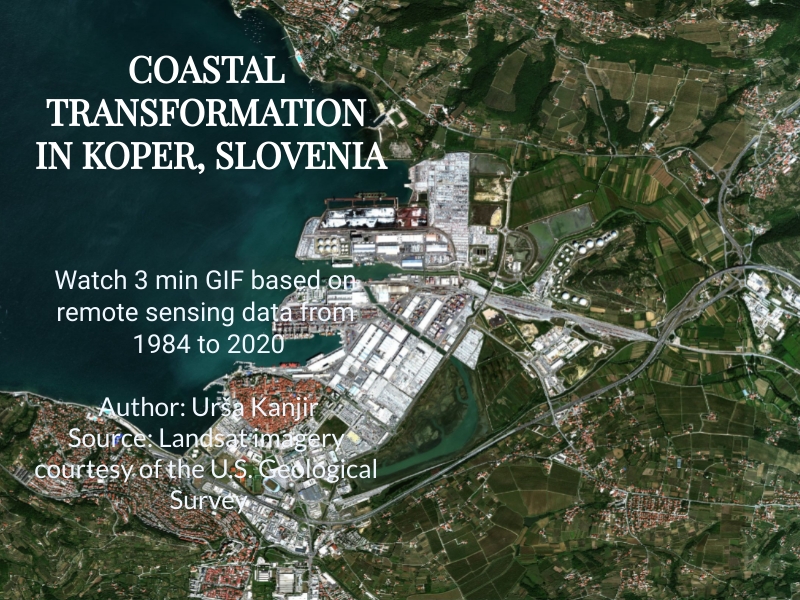Slovenia, Koper, north Adriatic Sea 1984-2020

Welcome to the northernmost part of the Mediterranean Sea, to the northeast Adriatic corner. We invite you to focus on the red dot, on the city of Koper (left side of the GIF image) that once was an island surrounded by the sea.
There are several coastal changes (past, present and future) to which we would like to draw your attention. First, the city of Koper – nowadays home to one of the most important industrial ports in the North Adriatic – grew on the island, slowly spreading towards the land. The bay no longer exists (you can only imagine it by looking at the shape of the coast, but this was not only due to human activities. Two rivers, the Badaševica and Rižana, that ran into the sea actively contributed to a coast transformation, as they brought silt deposits, created perfect conditions for saltpans (active until the beginning of the 20th century) and caused the area to become a marshland slowly. Second, several transformations caused by the development of the port are visible. In the 1960s, activities related to the development of the port of Koper started, drying up the bay and eliminating the remaining bay water. On the image, in the right upper corner, you can see the development of the second port’s peer and its infrastructure spreading towards the hinterlands. Third, a large shallow inlet (visible on the image as a changing green area in the hinterlands of the port), nowadays a natural reserve called Škocjanski Zatok, is closely linked with the development of the port. This area was used as a port excavation dumping ground to be filled in and built over due to the expansion of the port. However, environmentalists noticed that the place was a sanctuary for various bird species. Nowadays, the port co-exists with the natural reserve, with the city of Koper and large shopping malls built recently where saltpans once existed. Fourth, in 2020, new investments started in the Port of Koper that will expand Pier 1 (the first pier is visible next to the red dot) into the sea, deepen the seabed, and build a new warehouse for a car terminal, terminals for general and bulk cargo, three new reservoirs for liquid cargo as well as new railway tracks. The large investments, aided by EU funds, are to ensure that the Port of Koper remains the largest container port in the Adriatic Sea. Even though the Port of Koper is economically important for the area, it affects fisheries adversely. Recently, commercial sea fisheries were restricted in favour of prioritising commercial ship activities.
Credits: Nataša Rogelja Caf and Urša Kanjir
